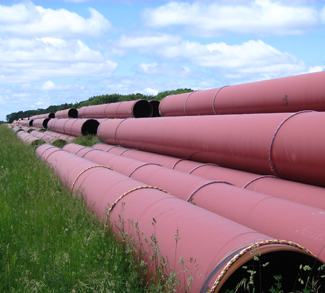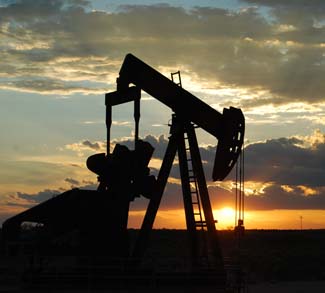The energy economics of the world is now at a crossroads, giving rise to a fiery debate among experts whether it will bring about a momentous change in the world’s strategic balance. The Ukraine crisis has given an impetus to it by threatening a cut in the supply of Russian oil and gas to Europe; the West is now on the lookout for an alternative source of energy. With the United States making rapid progress in the area of shale oil and gas technology, and several large-scale shale reserves being discovered in Western Europe and Latin America, dependence on hydrocarbon supplies from the Middle East and the Persian Gulf will decrease, which will ultimately lead to a lapse in big power involvement in the region. This has all come as a boon to American companies involved in the exploitation of shale resources, and they are leaving no stone unturned in sweeping away the impediments to their business expansion.
Now the big question is whether India can take advantage of these technological advancements, as she also has commercially viable shale reserves.
But there is a flip side to the shale revolution. Environmentalists worldwide have protested against the exploitation of shale resources, arguing that it may cause serious ecological harm as the process involves use of poisonous chemicals. Even officials in India’s Ministry of Environment and Forests voiced opposition in inter-ministerial meetings convened to consider the draft policy on the use of shale technology. There are also allegations in the United States that many of these companies engaged in shale exploitation are not divulging their modus operandi, making it difficult to know the true extent of environmental impact.
More transparency can help if shale is to solve the world’s longstanding energy problems and geopolitical overreliance on the Middle East. Last year the World Bank was hopeful that oil prices would fall under $102 per barrel. Although the projection seemed a bit optimistic, it cannot be denied that the Western world has moved towards energy self-sufficiency, and the emerging energy situation may not be as bleak as it has been made out to be. While the US has been increasing its domestic crude oil production – recording a jump of 1.4 percent in 2012 – Canada is sitting on a massive reserve of two trillion barrels. Production has also been growing in various other Central and South American countries like Brazil, Columbia and Mexico.
Where does shale gas stand in this unfolding scenario? In 2010, shale gas constituted 23 percent of total natural gas production. It is estimated that by 2035 its share will rise to 49 percent. The amount of global shale gas reserves indicate that it can meet the energy demands of the world for a long time to come. While the US has 24.4 trillion cubic meters (TCM) of reserve, Argentina possesses 21.9 TCM, Europe has 18.1 TCM, China has 36.1 TCM, and Australia has 11.2 TCM. India’s share stands at 6.3 TCM.
According to the experts, there are many basins in India with rich shale energy reserves. But only six such basins have been identified wherefrom extraction is possible. They are Cambay, Assam-Arakan, Gondwana, Krishna-Godavari, Kaveri, and the Indo-Gangetic plain.
Oil and gas reserves can be found in shale formations at average depths of 2,000 meters, and sometimes beyond 3,000 meters. The amount of worldwide reserves no doubt holds high hopes for energy security. But the problem lies in the fact that the exploitation process is not at all environment friendly and the shale oil and gas blocks are mostly situated in areas with human settlements and therefore involve the question of rehabilitation and resettlement.
The process used to release energy resources trapped in these depths is called ‘hydraulic fracking.’ Hydro fracking involves the construction of deep wells and then pushing three to four million gallons of water per-well, mixed with sand and chemicals like benzene, xylene, and others. Among them benzene is highly carcinogenic and known to be causing diseases like cancer and neurological disorders. The real danger lies in the fact that the water pushed into the well is eventually soaked into the earth surface, threatening to contaminate subterranean aquifers and create a local water crisis.
This method has raised intense debate among environmentalists and policy makers. The Energy and Resources Institute (TERI) has opposed the use of shale resources on environmental grounds. About 86 percent of available water in India is necessary for agriculture and therefore with three to four million gallons of water used in per shale well, agriculture would be deprived of water. It has been estimated that in the next 12 to 15 years water consumption will go up by 50 percent while supply of it will diminish by 5-10 percent. According to TERI, India is running towards water scarcity very fast and by 2030 all of its basins will experience water shortage.
How should India react in such a scenario, where the tantalizing proposition of a huge shale gas recovery is pitted against the spectre of environmental destruction? It is obvious that a serious balancing act is necessary. It is a fact that India is in a precarious situation so far as energy reserves are concerned, and energy demand is expected to rise by 7 to 8 percent annually in the coming decade. Currently, 75 percent of India’s energy inputs are imported with coal forming the lion’s share. However, coal imports rose by 135 million tons in 2012-2013, putting a severe strain on the country’s exchequer.
But it would be wrong to assume that shale oil and gas are a panacea for India’s energy woes. True, India has a 50 percent shale gas recovery rate while the same for conventional oil and gas is only 30 percent. But the average life span of a shale well is only 5 to 7 years. Keeping in mind the huge cost necessary for digging out each well and the astronomical wastage of water, even some of the companies engaged in shale oil and gas extraction in the US do not consider hydro-fracking a viable proposition.
Yet given the paucity of her energy supplies, India cannot turn her face away from shale resources completely. Therefore the government of India’s decision to allow only public sector organizations like the Oil and Natural Gas Corporation (ONGC) and Oil India Limited (OIL) at the initial stage to explore on-land blocks which were awarded to them seems sensible. Subsequent phases are marked for involvement of other companies, including private ones. At the same time tireless efforts should be made to exploit coal bed methane (CBM) gas which lies much closer to the surface and is therefore less expensive for extraction and use. But it should always be kept in mind that methane is highly polluting whose Global Warming Potential (GWP) is 25 while that of carbon dioxide is only 1. So leaks of methane gas from pipelines would have to be stopped at any cost.
The opinions, beliefs, and viewpoints expressed by the authors are theirs alone and don’t reflect any official position of Geopoliticalmonitor.com.




